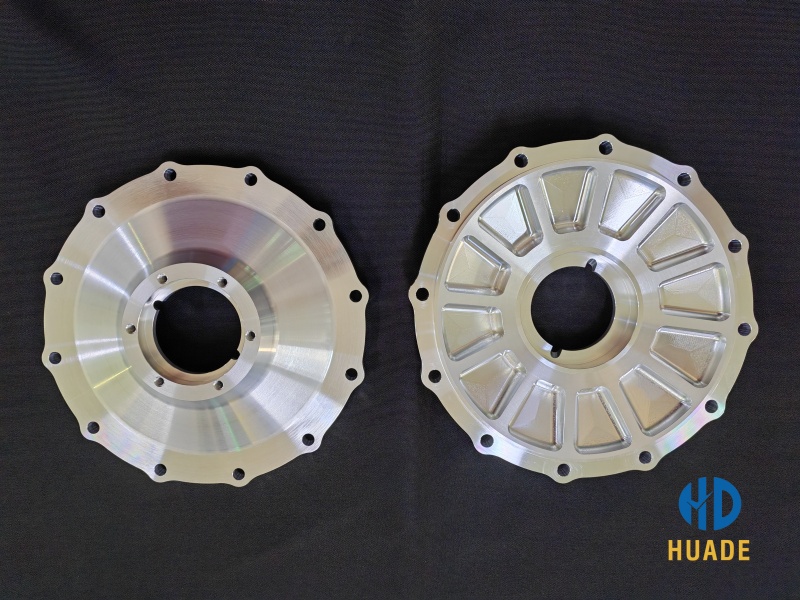GM 4.5L Duramax V8 Prototype: CNC Machining the Heart of Innovation
The journey from concept to production is paved with prototypes. Take the legendary GM 4.5L Duramax V8 Prototype. This engine represented a significant engineering leap, demanding components machined to exacting tolerations under immense secrecy. CNC machining was absolutely central. Engine blocks, cylinder heads, intricate fuel system parts, and bespoke turbocharger housings – all required complex geometries in advanced materials like high-strength aluminum alloys or compacted graphite iron. CNC machining enabled the rapid iteration needed: creating durable, leak-proof prototypes for rigorous dyno testing, thermal analysis, and real-world simulations. Every bracket, every sensor mount, every custom manifold produced via CNC allowed engineers to validate the GM 4.5L Duramax V8 Prototype’s performance, durability, and manufacturability before committing to full-scale production tooling. The precision demanded in such powertrain prototypes is non-negotiable; a micron-level deviation in a fuel injector body or valve seat can mean the difference between meeting emissions targets or failure.
The Stolen Chevy Corvette ZR1 Prototype: When Physical Security is Paramount
The infamous case of the Chevy Corvette ZR1 stolen prototype is a stark reminder that prototype value extends far beyond engineering. This wasn’t just a car; it was millions in R&D, competitive intelligence, and future market strategy made tangible. For manufacturers creating high-value physical assets like automotive prototypes, security protocols must be as robust as the CNC machines building them. This involves:

- Controlled Access: Strict biometric or keycard access to CNC machining floors and prototype assembly areas.
- Digital Safeguards: Air-gapped networks for sensitive CAD/CAM files, encrypted data transfers, and rigorous digital trail audits for any prototype component program.
- Physical Tracking: RFID tagging or unique serialization of critical CNC machined components for the Chevy Corvette ZR1 prototype to aid recovery and trace leaks.
- Obfuscation: Disassembling prototypes for transport, using non-representative body shells during early testing, and compartmentalizing knowledge among teams.
The loss of such a prototype isn’t just a financial hit; it can compromise years of development and hand competitors an invaluable advantage on a silver (or carbon fiber) platter.
Alien: Prototype Codes – Securing the Digital-Physical Interface
While “Alien: Prototype Codes” might evoke gaming lore or sci-fi, it perfectly illustrates the modern challenge of securing both digital and physical assets in prototyping. Consider cutting-edge consumer electronics, aerospace components, or medical devices. Often, the most critical aspect isn’t just the physical CNC machined enclosure or internal chassis, but the proprietary firmware or software (“codes“) embedded within.
- Hardware as the Vault: CNC machined enclosures for sensitive electronics prototypes can incorporate tamper-evident features, unique fasteners requiring specialized tools, or even conductive traces that break and erase memory if opened improperly. The physical prototype becomes the security system for its digital core.
- Secure Manufacturing: Producing these secure enclosures requires CNC shops with impeccable digital security hygiene to prevent the prototype designs or the associated codes from being intercepted during manufacturing. Secure file transfer protocols (SFTP), isolated production networks, and NDAs are baseline.
- Controlled Distribution: Physical prototypes containing sensitive IP or codes need tracked logistics, often with bonded couriers, especially for international shipping, minimizing the risk of interception or duplication en route to testing facilities or partners.
CNC Machining: The Enabling Force for High-Stakes Prototypes
Across these diverse scenarios – from the powerful GM 4.5L Duramax V8 Prototype, to the coveted Chevy Corvette ZR1 stolen prototype, to devices safeguarding critical Alien: Prototype Codes – CNC machining proves indispensable. It provides:
- Speed & Agility: Rapidly turning digital designs into tangible, testable parts for iterative development.
- Complexity Unleashed: Creating intricate geometries, internal channels, and lightweight structures impossible with traditional methods, crucial for performance prototypes like engines or aerodynamics components.
- Material Versatility: Machining everything from plastics for early form studies to exotic alloys for functional testing under extreme conditions (like those experienced by a Duramax V8 block).
- Precision & Repeatability: Ensuring components fit perfectly and perform consistently, whether it’s a custom intake manifold or a secure electronics housing.
- Low-Volume Viability: Economically producing the small batches essential for prototyping before mass production investment.
Conclusion: Prototypes Demand More Than Just Technical Skill
The stories surrounding the GM 4.5L Duramax V8 Prototype, the Chevy Corvette ZR1 stolen prototype, and the concept of Alien: Prototype Codes highlight that successful modern prototyping is a multifaceted endeavor. It requires not only advanced CNC machining capabilities for precision and complexity but also a deep understanding of material science, rigorous quality control, and – increasingly – robust security protocols encompassing both digital data and physical assets. Protecting intellectual property, ensuring component integrity, and maintaining confidentiality are now intrinsic parts of bringing groundbreaking prototypes from the secure confines of the CNC shop to the world stage, or keeping them safely out of the wrong hands. The value locked within a prototype demands nothing less.
Have a specific requirement? Reach out to our engineers and explore more insights and machining capabilities at www.hdproto.com.
